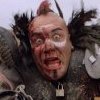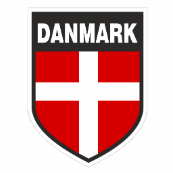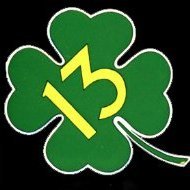Leaderboard
Popular Content
Showing content with the highest reputation on 06/04/2019 in all areas
-
Su-27 "Arctic Flanker" Trumpeter 1/32
Loach Driver and 18 others reacted to Memir for a topic
Trumpeter Su-27 1/32 finally finished... I tried to build heavy weathered Flanker based above polar circle with units called “ Guardians of the North”. I used Zacto intakes, nosecone, missiles and pylons. Aires Cockpit, wheel wells and exhausts. Armory resin wheels. Front windshield is a scratch build as kit part was really bad in shape. Colors - MRP paint including silver primer, transparent paints and metalizers. Tamiya panel liners and weathering Masters used. WIP here:19 points -
Iconicair Supermarine Attacker FINISHED.
Durangokid and 10 others reacted to ericg for a topic
In an effort to move this one on a bit, I pushed through and got it finished. Just in time for this weekends Model Expo in Melbourne. All in all, an enjoyable build of an interesting aircraft. My normal `just finished' photos. Studio photos to follow soon. I decided to leave the rockets off due to them being quite fragile and they didn't add anything to the look of the completed model. It will live on my all resin jets shelf for the time being. Thanks for following on!11 points -
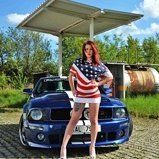
P-47D-25-RE Lt.Col.Francis Gabreski
BiggTim and 7 others reacted to Miloslav1956 for a topic
1/32 Hasegawa kits HGW rivet set, wet transfers Barracuda wheels Techmod decals 32011 Aires wheel bay, engine, gun barrels Avionix cockpit All colours MRP8 points -

#1 LSP on your Shelf of Doom - post pix and cheer on
Vandy 1 VX 4 and 5 others reacted to Zactoman for a topic
I think I'll skip that group build Yes, she's dusty...6 points -
PZL P11 III “Cleveland” 1932 from scratch scale 1/32
TorbenD and 4 others reacted to Marcin_Matejko for a topic
Another nice souvenirs, this time from Krakow. The cup for the best aviation model and the Grand Prix of the exhibition5 points -
Bonjour à tous , je vous propose mon interprétation de ce très joli chasseur Japonais de l'école de chasse d'AkEno. Kit Hasegawa 08880 Eduard extèrieur 32238 Figurine CMK Rivetage et traitement de la carlingue pour un effet de stress . Peinture Vallejo. Merci de m'avoir regardé A bientôt4 points
-

Hartmann's last Bf-109G10
alanash1963 and 3 others reacted to rafju for a topic
Hi All @Menelaos, cool info and one more 100-110 view: https://postimg.cc/dLG1wQrM4 points -
for all those that want to now more about the "cowl Types" of the Erla G10 here are some drawings:4 points
-
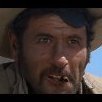
WNW DH.9a 'Ninak'
ringleheim and 3 others reacted to tucohoward for a topic
Hi guys. It's been a while since I have been posting here but I have been building and trying to keep current on the forum. This is my most recent build which I just finished Saturday morning along with 12 hours on Friday to get it ready for the NoVa IPMS show on Saturday. Didn't really have time to look it over too closely yet but am happy with the result. Had a few issues with decals as I almost always do and ended up having to mask and paint the rudder and the upper wing roundels. I was most happy with the wing roundels as I used a circle cutter for the smaller rings but the cutter would only do 50mm max and I needed 52mm for the outermost 1mm white ring. I ended up clamping a #11 blade to a compass to cut it. Still surprised it worked that well. Fair amount of rigging on this one. I decided to go with fishing line and not EZ Line because I wanted it to be silver. Briefly thought about PE rigging for the RAF flat wire but decided that would be nuts. Anchored with Gaspatch turnbuckles and Bob's Buckles. I tried painting the fishing line first but even that thin layer of paint made it very difficult to thread through the tubing so had to paint them in place. Anyway, glad to post something again. Cheers, Jay4 points -
I've finally got a roof on the Cessna. I made a roof from .040" sheet and super glued it to the side walls (after making some covers to hide the wing attachments) as well, the instrument panel is finally in as well. and plunge formed a new windshield to replace the kit windshield as the new roof and old window weren't going to work together. the kit windshield plunge formed windshield4 points
-
Hello Hello While i wait for my Feixstowe wings to settle, i thought i'd start this kit I have a connection to the Bushmaster because i did the CAD profiles for the Bisalloy plates for the bullet proof windows. The main thread is over on the Armarama site, but i thought i'd add a few pictures here as well my window The kit has copped a lot of unfair comments, yes some fits are clunky, but overall its good3 points
-
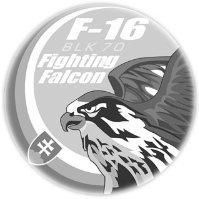
A-4N Ahit 1/32 Trumpeter
Tony T and 2 others reacted to Peter Gregor for a topic
Hi guys, I would like to present my other project, A-4N Ahit tail number 389. I used the Trumpeter A-4M kit with Wingman Models A-4N upgrade set, AMS corrected intake, wheels and refueling probe, Aires cockpit set with homemade upgrades to N version and Eduard exterior, flaps and slats set and Isradecal decals. I used MRP paints and Ammo of Mig washes and Oilbrushers as usual. As the source of information and pictures, I used Double Ugly Book A-4 in IAF service. Thank you for all comments...3 points -
MiG-23ML "4644" 1. SLP. Planá airport, České Budějovice, 1991 -first take-off of the aircraft was made on November 27, 1982 - fly to Czechoslovakia to ČB 22. 12. 1982 - total air raid 1136h and 41 minutes - The last flight took place on 26th October 2000 by Maj. Zdeněk Ouda Model: Trumpeter, Scale: 1/32 Author: Petr Pícha Photo: my frend Miloslav (thank you) Accessories: Aires-cockpit, nozzle, Wheels bay, avionics Eduard- photo etched part-exterior, Quickboost-cooling of aggregates Master-pitot tube, sparkers Linden Hill-Decals Customization: partially modified air intakes, APU-23, APU-60 -Helping keel - exhaust and suction channel of the turbostrarter - undercarriage legs -IR sensor -Other little things More Photo + building: https://www.leteckemuzeumliborezy.cz/mig-23/3 points
-
3 points
-
Look forward to catching up mate. Now I just have to work out how to pack the 7 models I have completed since last years Expo to bring with me! Eric.3 points
-

Revell 1/32 F4U Corsair - DONE!
MikeC and 2 others reacted to themongoose for a topic
She's all done except for the decals...although after looking at the pics I may still do some touchups LOL don't we all do that! I left the canopy frame ZC but I think it needs to change. Going to look up some pics of them in flight with the canopy open to see what it should be. Way too stark in the pics below. Will have to do some work on the way I have it mounted. It wants to roll left [sn0ps] Now there's no prop on her yet. Until I get the decals on I don't want to risk messing it up. Also will see if the short video of the Magic Scale Modeling lights, sound, and engine will link up as well. You gotta love this dopey pilot that came with the plane! I cleaned him up alot but there just didn't seem to be much more I could do with him. If you click on this one it takes you to Smugmug and you can play the video...at least it worked that way for me. Let me know if it doesn't work.3 points -
Revell He 111P with HPH cutaway conversion.
mustang1989 and 2 others reacted to Kahunaminor for a topic
Some more AM that means hacking into plastic. Not all the resin will be used apart from the fact I am only doing half an aircraft. The fuel fillers can be used but the life raft did not have an external access on the early 111P: The wing fuel tanks require removal of some substantial lower wing area. The bomb bay structure has been marked for removal as per the HPH/Eduard requirements: The engine nacelle has been completed and the QB Resin exhausts cut from their moulding blocks and test fitted: Finally the seams on the fuselage to inner wing join are quite good: I may have made a rod for my back in not installing the tanks and filler prior to joining the wing fuselage but we shall see. Regards,3 points -

#1 LSP on your Shelf of Doom - post pix and cheer on
Rick Griewski and 2 others reacted to Neo for a topic
On a side jot after posting i took a kit that has been in the queue for decals and decaled it with my daughter (1/48 bi plane). ! Motivation3 points -

Revell Fw190 A-8 Sturmbock - any reviews / what's inside etc
Gazzas and 2 others reacted to Isar 30/07 for a topic
I don´t know yet as there are some decal options out there and Eagle Strike has announced another sheet. I did this one some 15 years ago using Hasegawa and parts made scratch. http:// http:// http:// Reimund3 points -
It was about time I've started to concentrate on the foward fuselage section, and made some basic interior details. After studying some documents on www.avialogs.com I realized, that I apparently miscalculated the number of frames at the very forward area. At first, I thought there were 4 (including the one where the nose glazing starts), but apparently there are only 3. The printed fuselage halves already had recessed lines were the frames should be glued later on (as I did with the rest of the fuselage). To fix that error, I printed thin inner fuselage walls with the (hopefully) correct number of frames. Talking about the front interior color, I think I'll choose some kind of brownish olive drab, like on Flak Bait. Seems like a fabric cover. But I'm not sure yet about the bulkheads. I think the one behind the cockpit was metal/unpainted. But what about the bulkhead between the cockpit and the very forward bombardier section? On this site, there are a number of pictures: https://airandspace.si.edu/collection-objects/martin-b-26b-25-ma-marauder-flak-bait On the very first photo, it seems to be metal, while on photo Nr. 23, it could also be green/olive drab or whatever I have to investigate further. Cheers Alex3 points
-

B-17G + all detail sets from Eduard
Martinnfb and 2 others reacted to Miloslav1956 for a topic
Today update.3 points -
Finally got some MOJO and hit the model room recently. Trial and error getting the canopy tinted and the rest of the bird ready for paint. What I have found out is there are about a thousand way to do TPS paint schemes....I aimed for center mass and hoped for the best. I'm doing a heavily weathered/faded aircraft from ~1991 onboard NAS Patuxent River....so lets get on with it. First...major pre-shade in the areas that are heavily weathered. My observation is any black base is going to make any TPS grey you put on take on a darker tone (so beware) Next comes a series of lighter grey pre-shading and basing...along with some brown. We have seen this type of modulation over the past few years....seemed a decent way to go: Now comes very very highly thinned TPS grey's. Using Mr. Levelling Thinner....I just sprayed on thin coast to start to cover the base work Now with the base TPS down....it's time to start beating her up. You can see some references in the background, that's my target. Used a lighter color of camo grey for the touch ups. Finally, with the painting down for now....time for the non-skid. Simple Mr. Surfacer dabbed on and stippled. Darkened it up based on some reference photos: Next is back to planning my attack....mask the areas where traditional grey warning and caution markings go then shoot the Orange. Of note....other ref pics I have shows this aircraft still had white lower wings (just the section outboard the wing fold) with orange markings (except the speed break...which was white). Cheers Collin3 points
-
I painted the ejection seat. I used a very fine tipped Copic multiliner marker pen to draw in the stitching on the belts and the black lines in the ejection handles. Next up was the rocket rails. I scratchbuilt one good one from plastic card and rod. Fitted with a rocket for sizing. I have used the Aires RP-3 rockets with concrete warhead practice rounds. i then made a copy of the stubs in resin Which I multiplied by 6 pairs. I used plastic rod for the rail part. Test fit. My good mate Les was kind enough to make me up some 803 sqn crests for either side of the tail to match the ones on the real 109 I used the excellent Australian made gloss clear produced by SMS to clear coat the model before applying the stencil data. Highly recommend this stuff. Getting closer to the finish line.3 points
-
This is an OOB build trying to be built into a ICAP II aircraft based out of Patuxent River in the 1990's. First, this kit is a lesson on learning to test fit, and a great subject to learn to use super glue and better your scribing skills. Trust me....if you build this kit, you will get practice at both. Used Miliput to create some seatbelts on the other-wise bland seats. Cockpit painted up and installed. Overall this is the state she is in now. This kit has fit issues. The wings went on pretty well after searching the net and getting the "gouge" on how to grind down areas to get a better fit. The rest of the kit fits OK, but I pulled out the super glue and scribing tools and went to work. Upper surface wasn't that bad. The belly was a pain. Lots of glue/sand/glue....then rescribe. The intakes are a pain, so this is how they ended up: Built the canopy up (I plan on building it closed). Added a small strip of plastic strip to the underside to provide some rigid structure...it's very frail without it: Also trying my hand at darkening up the canopies. Prowlers have to hard to recreate tint, but I am trying to some brown Future wash (just experimenting at this time): And finally tried my hand at creating wingtip lights (and rescribing the lost details): Cheers Collin2 points
-
hello every body !!! it's finish !!!! yves2 points
-

Fokker pair 2
MikeMaben and one other reacted to sandbagger for a topic
Hi all, The upper wing is nearly there. I just have the ailerons and their control cables and associated pulleys to add, plus the trailing edge wire. After that it'll be fitting the wing and struts, engine exhaust and propeller, wheels and aileron control cables connected - then that'll be it, Mike2 points -
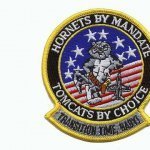
1/32 trumpeter F-14D
Starfighter and one other reacted to rosariovw for a topic
The last 3 days i did the dryfitting, and modding it all for the Zactoman intakes. Its not an easy task, resin wheelbays, resin ecs vents, and the intakes are not intended to be used together. I thinned the vents side, and made a thin cut in the air bleed compartiment. On the wheel bay side, and on the air bleed compartiment i had to remove some extra resin, so the compartiment rests on the angled wheel bay part. Also, i added some strips to make sure the compartiments get on the correct position, and added a cover on the bottom of the vents. painted the intakes just an example2 points -
And hopefully a WIP to go along with that!2 points
-
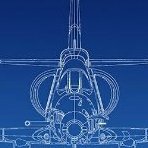
Models for a Movie
Youngtiger1 and one other reacted to Greg W for a topic
The crane is the last of the Italeri parts to be added to the Trumpeter kit. I think it looks good. The rest of the build will be straightforward, following the instructions to completion.2 points -
Hi Thierry Please post pictures of jumo nose if you find it. I ordered Allycat A, B, C and D conversions last night. Cheers Mikkel2 points
-

Hartmann's last Bf-109G10
Menelaos and one other reacted to thierry laurent for a topic
It is flat. Better copies of the picture clearly show an Erla type cowl.2 points -
Flightpath RAF Tornado F3 Detail Set
Rick Griewski and one other reacted to Chek for a topic
The way to distinguish an F2 from an F3 is the longer fuselage for the longer jetpipes. The closeness of the taileron hinge to the edge of the panel is easy to spot. There will be 30 years worth of upgrades to the cockpit to be considered, as well as minor external such as chaff/flare dispensers. The twin missile launchers on the inboard pylon were also, I believe a later addition, so F3 only.2 points -

Hartmann's last Bf-109G10
109 and one other reacted to thierry laurent for a topic
Not so sure as "type 110" is the same than "G10 Erla": 7 letters & digits! It is well-known this is just a modeller reference but it has the advantage to identify all the cowling types from the F to the K, whatever may be the variant... We may like it or not but before Mermet's work, there was no clear nomenclature covering all the types.2 points -
F-16C Splinter Aggressor, 18th Aggressor Squadron - More pics
phantomdriver and one other reacted to Marcel111 for a topic
Hi guys, I finally got around to taking some better pics of this model, which I completed earlier in the year. Chuck, big thanks for nudging me on the pics Thx for looking, Marcel2 points -
Thank you for the comments! To Damian... Thank you for the additional details regarding the antenna mast. It makes sense that there would be an airfoil shape instead of the square cross-section represented by the kit part. I'll see what I can do about that! And the absence of the external bulge on the main gear doors should be correctable. I''ll have to refer to the kit parts to confirm. To Kais... Thank you for the comment about the canopy. Based on my understanding of Airfixer's comments on my G-10 build, the overlap between the rear edge of the canopy and the fuselage was a feature of the early Galland hood that were retrofitted to existing 109G airframes. And not a feature of the later G-10 and K-4 models? I was not planning on trying to replicate this overlap. June is a very busy month for me, fishing and family-wise so my work on Weisse 8 and the Corsair will be limited. I DID get my camera situation resolved however. I just received a replacement for the balky Canon S100... This Canon Powershot S110 was purchased used from EBay for less than $100. A preliminary test was conducted to see if the focusing and exposure compensation features were working correctly. The camera seems to work a-ok. As you can see, I've started to clean up the Henri Daehne resin spinner.2 points
-
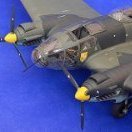
1/48th Boeing B-52H Stratofortress
D.B. Andrus and one other reacted to tomprobert for a topic
They didn’t come out too bad - the proof will be in the pudding when it’s been primed. I’m hoping to avoid having to fill and rescribe the whole model but we’ll have to see. Handling it is not easy, that’s why it’s easier to work on it outside. The table lamp on my workbench quivers in fear every time this appears!2 points -
hello, my last built , all markings are paint , enjoy :2 points
-
Howdy pardners Thank you so much for all your kind words - it really spurs me on to do my best I needed to move on under the fuselage to the scoop exhaust area - again this is a bunch of compound curves, but quite an interesting part of the airframe.. ..having chopped out the 'kit' part as it wasn;t right, I had replaced it with a card & filler structure, but this still needed rework when I got to it as the sidewalls needed to be strong to take burnishing down the metal skins to get the curves.. ..so the first thing was to create some stiff brass walls... ..this was then lined with pre-rivetted ali skins.. ..on the real deal, you can see the roof skin is ribbed to aid airflow and there is an opening for the strut that controls the door in this area.. ..I CA'd some brass wire to the roof to form the ribs over and started working an annealed sheet into the opening - this sheet was prepared by riveting the trailing edge and making the strut hole & rivets.. ..the tips of the scoop ribs were done by cutting the straight edges & pre-riveting, and then sticking these in place before forming the edges over the structure.. ..both sides done (before final finishing) - you can also see the ribs in the roof now.. ..the side panel has a hatch in it so this was added - here as the impact adhesive goes off before being folded back into position.. ..the other side has an indented oval (no idea what it is...) so this was made, then attatched to the skin and a hole made in the fuselage to accept the adaptation.. ..then it was all sanded to uniformity & any missing / lost rivets added.. ..I had also made the radiator before so this was test fitted.. ..have moved to the underwing panels behing the main gear -once these are down, the radiator airscoop can be added back and all the skinning under there completed TTFN Peter2 points
-

B-17G + all detail sets from Eduard
Martinnfb and one other reacted to Miloslav1956 for a topic
Last update.2 points -

Models for a Movie
Durangokid and one other reacted to Greg W for a topic
In this next group of photos, you can see the Italeri cargo bed glued to the Trumpeter frame. The flat bed was badly warped, with a pronounced twist, requiring me to use hot tap water to straighten it out. I glued the box sides on and placed some weight on the assembly while the glue dried. Still, there was a enough of a twist to send me back to the kitchen sink and use hot water again. Needless to say, I was very happy to find that the cargo bed frame fit perfectly, like it was made to go there.2 points -

1/32 Kitty Hawk F-5E Kicked Up A Notch. Oct 3/19. Finished!
CarstenB and one other reacted to chuck540z3 for a topic
Thanks everyone! Since there seems be some interest in a tutorial on applying Archer Rivets, here’s what I do. First the basics as mentioned above, which are my opinion alone and not necessarily those of others, including Archer. Archer Decal Rivet properties: 1) The wider the decal film, the stronger the chain of rivets, but the higher the chance that it will show under paint, no matter how much decal softener you use. Checking other builds using this product, you will see what I mean. 2) The narrower the decal film, the more fragile the chain of rivets, which often break apart, but it will not show as easily under paint. 3) Rivets applied to curved surfaces should be done in short chains, for ease of handling. 4) Even single rivets can be applied successfully, so if you bump off one or two, repairs are easy. 5) Like most decals, these rivets come off the backing better with very warm water. 6) If you don’t like what you’ve done, the rivets can easily be removed with a finger nail and you can start over. 7) Archer rivets come in many different sizes and spacing, so I like to have a variety of them on hand. 8) The raised rivets are not always perfectly round, but after paint, you’ll never notice the small imperfections. 9) As long as you keep the decal segment wet, you can move it around for a very long time. Even after using Microsol decal softener, you’ve got more time to play with it than a regular decal. 10) These rivets are quite expensive at ~ $22/sheet! Application: 1) The surface should be super smooth and clean of any debris and oil from your skin. 2) Cut a long and thin strip of rivets off the sheet, then into shorter chains to be applied individually. If you’ve got a flat surface free of detail or curves, you can apply segments of an inch or more. Curves and detail require shorter segments. 3) Soak the segment in very warm water like any decal, for at least 5 seconds, then place it next to where you want to apply it for another 30 seconds or more. 4) Using a soft paintbrush, push one edge of the decal film off the backing, let it attach to the surface of the plastic, then push the rest of the decal off the backing. For longer segments, you can push one end off the backing by sliding it in one direction, then grab the backing and pull it off, leaving the entire segment behind on the plastic. If it breaks, don’t worry about it. You’ve got lots of time to get everything back together. 5) Using Microset (or plain water), re-wet the segment so that it floats, then move it into place. Using a paper tissue, pull the water away from the edge of the segment without touching it. 6) When you’re happy with the decal placement, using another soft brush dedicated to decal softener, apply some Microsol in very small dabs to tack it down. If the decal moves, you’ve still got at least 30-40 seconds to move it around without fear of destroying it. 7) For the next decal segment, apply it as above, but somewhere else! If you try to apply the next segment next to the one drying with Microsol, you will likely move it and create a mess. 8) When the first segment has dried a bit (~ 5 minutes), liberally apply more Microsol to it over the entire decal. Unlike regular decals, you can’t wreck it by applying too much softener. 9) In a bit of an assembly-line process, apply new decal segments while applying more Microsol to others, keeping new ones away from old ones. 10) If you knock a single rivet or two off, don’t worry. Just cut off a replacement and apply it in the gap. The strength of the rivet to plastic bond is mostly under the rivet and not beside it. 11) When you are done and everything looks pretty good, add yet another coat of Microsol to everything, all over again. You want to nuke the decal film into oblivion as much as possible. 12) When everything is clean and dry, I like to apply a good coat or two of Tamiya X-22 acrylic clear gloss to seal the rivets to the plastic, but also to smooth out the fine lines of the remaining decal film. I like to use about 2/3’s X-22 and 1/3 Tamiya lacquer thinner, which sprays very fine. Future/Pledge works just as well, but is softer than X-22 and harder to sand later if you have any imperfections. 13) Paint as usual. I use Archer Rivets on just about every one of my builds lately, because there are almost always raised rivets somewhere that are not represented on the kit plastic. Other than the extensive rivet detail on my A-10C above, here's another application of subtle detail on my F-15C Eagle build. Note the Archer rivets on the front of the titanium panels and also reinforcements on the tail booms, according to reference pics I have of the real deal. After paint.... For those interested in buying Archer Rivets, they can be found here, along with a host of other modeling products: Archer Fine Transfers HTH, Chuck2 points -

1/32 Kitty Hawk F-5E Kicked Up A Notch. Oct 3/19. Finished!
CarstenB and one other reacted to chuck540z3 for a topic
Quick follow up because I just sprayed X-22 on everything to smooth things out. BEFORE: AFTER: I'll let this dry for a few days, sand out the tiny flaws, then give it another coat to create a nice smooth finish for bare metal painting. Cheers, Chuck2 points -

1/32 Kitty Hawk F-5E Kicked Up A Notch. Oct 3/19. Finished!
CarstenB and one other reacted to chuck540z3 for a topic
May 29/19 After 1 month, I'm finally back with an update. It may not look like much, but this next step took me about 20 hours of picky, detailed work! The engine on the F-5 has a zillion fine rivets, both on the rear nozzles and the titanium panels just forward. This is what it looks like on a Swiss real deal.... There are two types of rear nozzles supplied with the kit. One set has fine recessed rivets and comes in two halves, creating a big seam, while the kit also supplies some one piece resin replacements, which I used. As you can see, they are cast kind of rough, the raised rivets are huge and there's an unfortunate casting block right where you don't want it, on the lip of the nozzle on the right. They also seem to have been cast crooked, but I found that the shallow lip goes on the outside, while the thicker lip goes on the inside. Of course the instructions say nothing about it! Here I have sanded off the monster rivets on the left. The rear of the nozzles should have two thin circles of metal, separated by a gap. To improve this look, I sanded the outside thinner, while carefully sanding the gap within. It's not perfect, but from a few inches away, it looks not bad. The titanium panels just forward of the nozzles have recessed rivets, which look OK, but I can make them better. As mentioned above, I have used Archer resin raised rivets many times before, so I've learned a few things about this great product as follows: 1) The wider the decal film, the stronger the chain of rivets, but the higher the chance that it will show under paint, no matter how much decal softener you use. 2) The narrower the decal film, the more fragile the chain of rivets, which often break apart, but it will not show as easily under paint. 3) Rivets applied to curved surfaces should be done in short chains, for ease of handling. 4) Even single rivets can be applied successfully, so if you bump off one or two, repairs are easy. With the above in mind, I found some Archer rivets that were about the same spacing as the kit rivets, but just slightly larger, so they would still adhere without filling the recessed ones. I found that chains of only 5 worked best, because they were easy to apply, but also compensated for the slight differences in rivet spacing. These are found in #AR 88015, with thin strips of rivets cut as shown. After many, many hours of work, they look pretty good. Not perfect by any means, partly because the kit spacing isn't perfect either, but when these areas are painted the same color, the small imperfections should almost disappear. Engine nozzles and V-shaped antennae on the sides are only dry fitted with masking fluid "glue". Top And don't forget the bottom, because it is covered with raised rivets as well in roughly this pattern from references. I see that I've missed a 3 rivet pattern on the top and bottom of the antennae at the front, so consider that fixed. Next step is to spray these rivets and panels with clear acrylic X-22, to seal them, toughen them and help hide the decal film. After paint, all you should see is raised rivets and no film. On to the fiddly stuff, like landing gear, gear well doors, etc. Not my favorite part of any build, but very important nonetheless. Cheers, Chuck2 points -

1/32 trumpeter F-14D
Durangokid and one other reacted to rosariovw for a topic
thanks for the support, got some done today. Started with the HUD, i tried to use some prismatic paint (alclad) but when i spray it, it gets white/flat. So, i used a brush, it worked great on the HUD lens. i tried it on the glass, and fucked it up, so made new ones. and sculpted a new wingbladder2 points -
I have had a real mixed bag of luck with transparencies since migrating from 1:48th to larger scale models. This canopy seemed to be cracked on both flat windscreens. Fortunately the rear one was a scratch that I could polish out, but the front one was cracked and I resorted to drilling it out and replacing with a piece of clear PETG. Needless to say I nearly destroyed the now flimsy forward frame and decided to glue the front "hatch" closed to increase the strength of the canopy as a whole unit. Here you can see the added framework inside the opening part, as well as a locking handle and a piece of air-conditioning piping. Each crew member has a little fan to blow air as desired in the cockpit, but the kit only provides one, so I had a little fun manufacturing another. The punch was really useful for the blades. For those who are hesitant about scratch building, here is an example of how a complex looking object is really just a collection of basic shapes. Another example is the jettison handle. The doors area bit basic OOB, so some PE and styrene to refine the look. Trumpy simplify the hinge mechanism by using two "elbows" on top of the door structure, but the Mi-24 only has one on the forward side, and a restraining cable on the aft side. The MONTEX mask for this canopy is quite a feat in measurement, and fits the inside perfectly. I added these fairly distinctive handles to the framework, completing the detailing. A fire extinguisher was added to the area just behind the left side of the cockpit, and finally the fuel line that everyone must trip over when trying to access the central compartment. I was in two minds about using the PE instrument panel for the pilot, but in macro it sure looks a lot neater than the kit part. you will notice that I plan to ditch the nav display provided, and rather use a blank display with a warning from my MiG-23 decals (doesn't look legible to me). And to answer Marcel's question... The most potent weapon against the Mi-24 in Angola turned out to be this little fighter - the AerMacchi MB-326K. It was licence-built by the Atlas Aircraft Corporation of South Africa, and known to us as the Impala Mk II. Armed with two DEFA 30mm canons and a well trained pilot, it was a formidable low level adversary. I will tell more of the story in due course. Cheers! Sean2 points
-

Hartmann's last Bf-109G10
D.B. Andrus reacted to Menelaos for a topic
say folks do we have any other pics of Hartmann's last G-10 (Type 110 cowl with small bulges on the wings)? Particularly the last half of that ac? was the camo in the rear half as it is on the profile?1 point -
RF-8G Trumpeter & Fisher Model
Coneheadff reacted to EricF for a topic
Dear all, I keep on working on camera bay with the pair of windows cut in 0,5 mm plexiglass. Everything is just a first dry fitting for now. Cheers Eric1 point -
Excellent. Very nice subtle weathering. Congrats!1 point
-
We’ve just launched our second eBook bundle, this time bringing together our first two books on Luftwaffe subjects: the HpH 1/32 Fw 189, and the Revell 1/32 He 219A-7. Building the HpH Fw 189 ‘Uhu’ in 1/32 Scale In Building the HpH Fw 189, Jan Gabauer tackles the impressive mixed-media 1/32 scale Fw 189 kit from HpH Models. Jan navigates the complexities of the build with aplomb, offering tips for working with resin assemblies, and overcoming the particular challenges of this kit. This book is a 66-page downloadable PDF. Building the Revell He 219A-7 in 1/32 Scale In Building the Revell He 219A-7, renowned UK modeller Iain Ogilvie tackles the Revell 1/32 scale He 219A-7 kit, finishing it to a superb standard. Along with plenty of hints and tips throughout the build, Iain navigates a simple but ingenious way of correcting the kit’s major flaw: misshapen engine nacelles that are set at an incorrect angle. This book is a 101-page downloadable PDF. This new bundle is available in our web shop for 20 Australian dollars: https://www.klp.com.au/product/luftwaffe-bundle/ Kev1 point
-
1 point

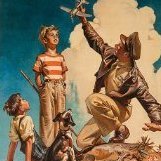

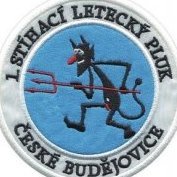
.thumb.jpg.745e9c32fdfafef712dcea77f75e8a27.jpg)
